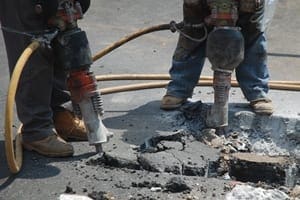When you work in an office job-even one that's otherwise rewarding-it's easy to feel trapped…

Indoor Air Quality? Here’s What You Should Know

When most people think about indoor air quality, they usually think about pollution. The first images that come to mind are often those of factories spewing smoke into the sky or long lines of automobiles crawling along endless expanses of highway surrounded by a haze of exhaust. But did you know that air quality can also be an issue INDOORS? It’s true, and with cooler temperatures on the way, now is a great time to discuss it.
When we talk about indoor air quality, we’re really talking about two separate contributors—pollution sources that release particles or gases into the air inside your home or workplace AND poor ventilation, which can prevent dilution and transfer of indoor air pollutants to the outside. It’s also worth mentioning that there can be higher concentrations of some types of pollutants in places where heat and humidity are high.
Where does indoor air pollution come from?
Indoor air pollution can come from a variety of common sources:
- Incomplete combustion from heating sources, such as gas, oil, coal, kerosene and wood
- Certain building materials, including insulation, carpets and carpet padding, adhesives and some types of engineered wood products
- By-products of some kinds of manufacturing processes
- Household and industrial cleaning products
- Outdoor air pollutants that make their way inside
Whether any of these things actually results in poor indoor air quality or creates health risks depends on several different factors. These factors include the age of the source, the quantity of pollutants released and how hazardous the pollutants themselves are, as well as whether emissions from known sources are being properly managed. For example, a gas stove emits carbon monoxide, but a properly adjusted stove emits far less than an improperly adjusted stove.
What types of health problems are associated with poor indoor air quality?
Poor indoor air quality can result in a variety of symptoms, including nose and eye irritation, sore throat, dizziness, headache, and fatigue. These symptoms are treatable and usually go away quickly after exposure to the pollutants is stopped. More serious illnesses, such as asthma pneumonitis, and humidifier fever are also possible consequences of poor indoor air quality.
Your age and overall health affects your sensitivity to indoor air pollutants, as does your genetic makeup, which varies from person to person. Sometimes the symptoms resemble those of a viral or bacterial infection, so it can be hard to know if the problem is due to indoor air pollution. It is important to note the time and place the symptoms started, and if they change depending on location. If the symptoms fade when away from home or out of the office, for example, indoor air quality problems are more likely to be the source of the problem.
Some health problems related to indoor air pollutants take years of exposure to develop. They include cancer, heart disease, and respiratory illnesses. Because these illnesses are so serious, it is a good idea to try to ensure good indoor air quality in your home and workplace at all times, even if no one living or working there has any symptoms. This can be accomplished by eliminating sources of pollution or reducing their emissions, improving ventilation and using effective air cleaners.
As chiropractic physicians, we take a holistic view of healthcare and have a special interest in day-to-day lifestyle choices that can either cause or help to prevent illness and injury. In addition to nutrition, exercise and sleep habits, we know that our patients’ overall health is affected by many local environmental factors—including exposure to toxins. If you or someone you care about has concerns about indoor air pollution or is experiencing the sorts of symptoms associated with so-called “sick building syndrome,” call or visit our office today. We may be able to help you rule out other potential causes or provide advice for identifying and managing the problem. Remember—we’re here to help!




